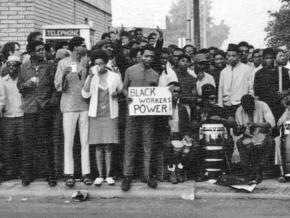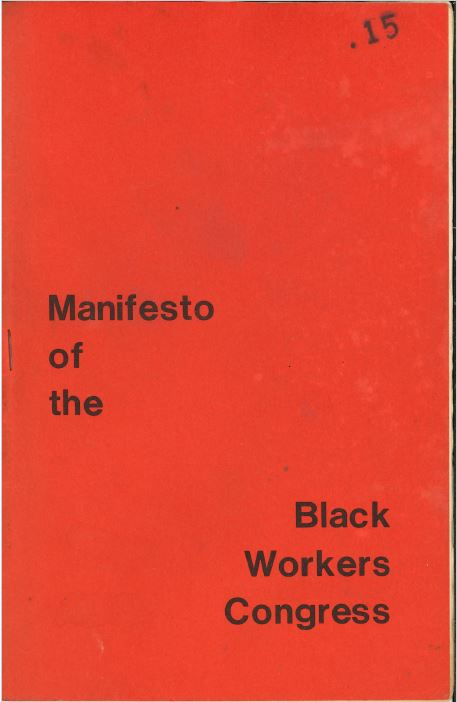Hagley's library collects the records of entrepreneurs, businesses, trade associations, and business lobbies, so issues around labor represented in our collections typically reflect the perspectives of these individuals and groups. But we also attempt to collect relevant material representing other experiences and points of view, including those of workers themselves.
One of our recent acquisitions is the “Manifesto of the Black Workers Congress,” a pamphlet published by the Black Workers Congress in 1970 or 1971. The Black Workers Congress was formed in late 1970 to broaden the support base for the League of Revolutionary Black Workers, founded just the previous year in the aftermath of racial violence that erupted during the last week of July 1967. Black residents' expressed their discontent with the unresponsiveness of city agencies, automakers, and the United Auto Workers union to their frustrations regarding Detroit's segregated neighborhoods, impoverished schools, declining job opportunities, and especially with the region’s automakers. The Detroit uprising was one of the largest and most violent of the urban conflagrations that swept the United States in the latter half of the 1960s.
 Although the League was active for less than two years, it marked increasing militancy and political activity by Black workers, coevolving with Marxist-Leninist, anticolonial, and Black liberation movements in the United States. After a May 1968 wildcat strike at the Dodge Main plant broke and punishment fell disproportionately on Black workers, strikers joined with editors of the local Black press to form a revolutionary union movement that spread to other automakers and even other industries.
Although the League was active for less than two years, it marked increasing militancy and political activity by Black workers, coevolving with Marxist-Leninist, anticolonial, and Black liberation movements in the United States. After a May 1968 wildcat strike at the Dodge Main plant broke and punishment fell disproportionately on Black workers, strikers joined with editors of the local Black press to form a revolutionary union movement that spread to other automakers and even other industries.
The leftward bent of these groups built on a history of alliances between those working toward greater civil rights and economic opportunities for Black Americans and leftist groups, who stepped in to support people of color in their struggles when other broad political organizations did not. For instance, since the early 20th century, the Communist Party USA helped organize Black American sharecroppers, supported anti-lynching campaigns, and even helped organize activists who would later be prominent in the civil rights movement.

The Black Workers Congress was intended to draw on Black radicals' experiences in Detroit and extend them to other industries and other cities in the United States. The basic concept was that of a Black American soviet, with workers controlling their workplaces coordinated by the Black Workers Congress. Tensions emerged when organizers formerly with the Student Nonviolent Coordinating Committee (SNCC) and the Black Panthers sought influence in the League. For League founders, these efforts threatened to weaken the focus on workplace issues.
When the "Manifesto of the Black Workers Congress" (see right) was published, the positive response it enjoyed probably came from those outside the factory workplace. Indeed, by the time of the Black Workers Congress’ first national conference, held in Gary, Indiana on Labor Day weekend, 1971, and attracting 300-400 participants, the League had already split into two groups: the in-plant revolutionary Black nationalist workers and the Marxist-Leninist intellectuals. The latter group inherited the Black Workers Congress, while the former eventually joined forces with the Communist League and Communist Workers Party.
The history of the Black Workers Congress remains understudied. To inform work on its historical moment, we invite researchers to our reading room at Hagley. More information on how to research at Hagley is available at research.hagley.org
Erik Rau is the Director of Library Services at Hagley Museum and Library
Attribution
Image 1: Khury Peterson-Smith. "DRUM and the Revolt of the Black Working Class." Socialist Worker. Last modified February 8, 2019. https://socialistworker.org/2019/02/08/drum-and-the-revolt-of-the-black-working-class.
